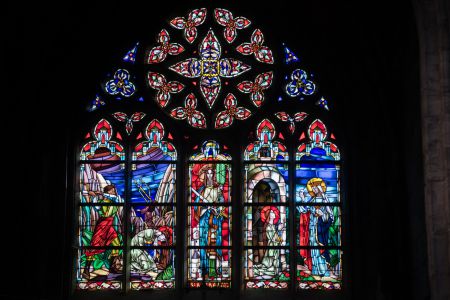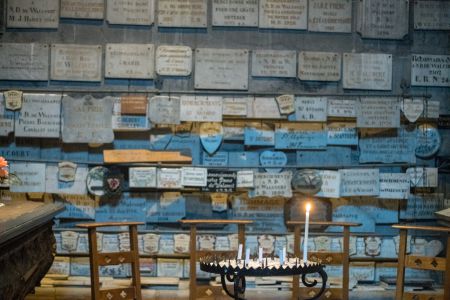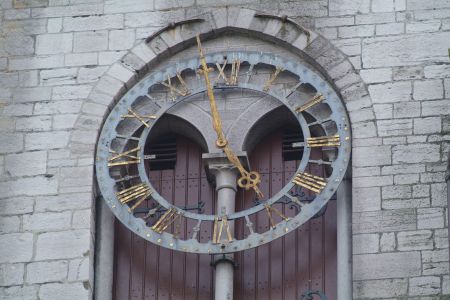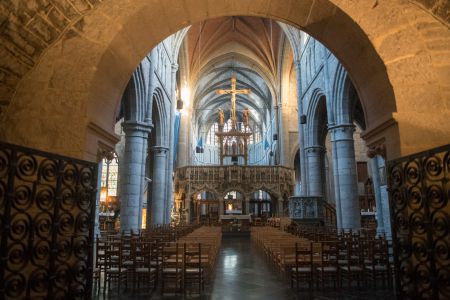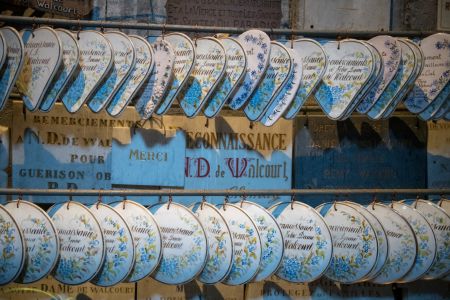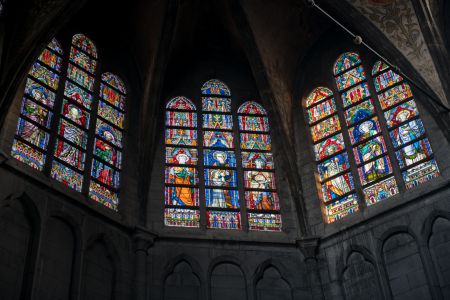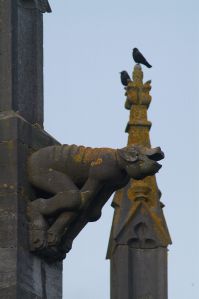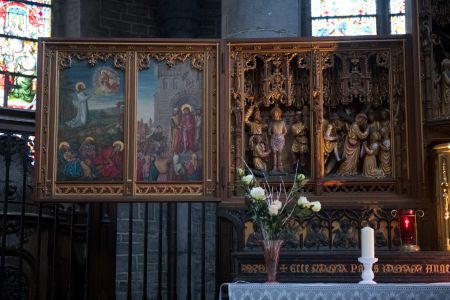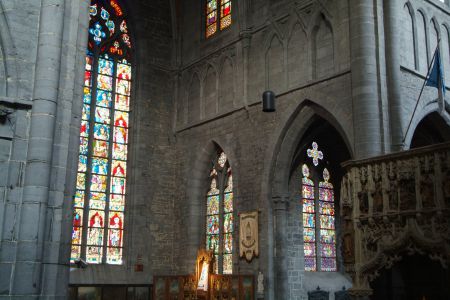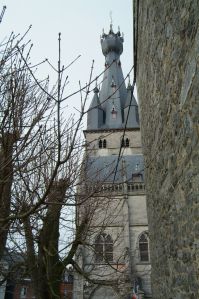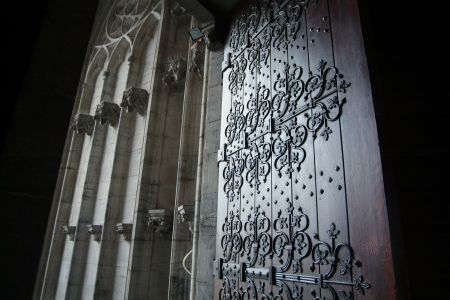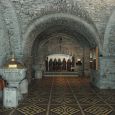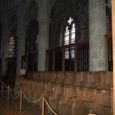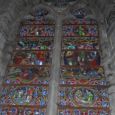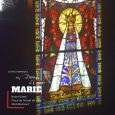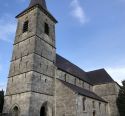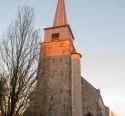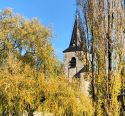Basilica | XII-XVI | Romanesque | Catholic Church




Map
Opening hours
01 April - 31 October
Mon 8.00 - 18.00
Tue 8.00 - 18.00
Wed 8.00 - 18.00
Thu 8.00 - 18.00
Fri 8.00 - 18.00
Sat 8.00 - 18.00
Sun 8.00 - 18.00
01 November - 31 March
Mon 8.30 - 17.00
Tue 8.30 - 17.00
Wed 8.30 - 17.00
Thu 8.30 - 17.00
Fri 8.30 - 17.00
Sat 8.30 - 17.00
Sun 8.30 - 17.00
Guided tour
+32-71-61 13 66
Religious offices
Monday and Thursday 9 am
Tuesday 10.30 am
Wednesday and Saturday 6 pm
Sunday 10.15 am - 6 pm
Description
One notices this majestic building from afar with its astonishing bell-tower topped by a bulbous spire. The oldest part of the church is 12th century Romanesque while the rest of the building is gothic. This church is protected as "exceptional Walloon heritage."
The church was named after Saint Maternus but the cult of Our Lady is well developed due to the presence of one of the oldest statues in the country of Mary, dating from the 10th century. The impressive rood-screen, the 40 oak stalls and a panel depicting the “garden miracle” are worth seeing. The latter is a supernatural transfer of the Virgin’s statue from the church to a tree outside during a fire in the building in the 13th century.
From this miracle originates the Grand Tour, a 7 hour procession which takes place on the Wednesday after Whitsun. Another important date is on Trinity Sunday when the Grand Tour is accompanied by military marches.
Photos
Media
Remarkable elements
The western massif or narthex
The western massif or Narthex is the oldest part of the basilica. It dates from the 2nd half of the 12th century. It is in Romanesque style. The Holy Sepulchre or Tomb of Christ dates from the 16th century, the figures are made of polychrome wood. It is composed of seven characters surrounding the body of Christ who was taken down from the cross. Jesus lies with his hands crossed on his body. Two men at the extremities, the buryers: at the head, Joseph of Arimathea and at the feet, Nicodemus. At the centre of the characters is the Virgin Mary who joins hands, John, Jesus' favourite apostle, and the three holy women: Mary Magdalene who dries her tears, Mary Cleophas and Mary Salome.
Our Lady's Altar and her statue
It was placed on the altar of the north crosspiece of the transept when the church was elevated to the rank of a collegiate church in 1026. This Romanesque Virgin dates from the end of the 10th century and is one of the oldest Marian statues of Western Christianity. The reliquary statue made of lime wood has been covered with silver plaques since the 11th century. It has been dressed according to Spanish fashion since the beginning of the 17th century. Following the fire of 1228, when legend tells us that the statue was carried by four angels to the place called Le Jardinet, every year a large Marian procession, escorted by the Notre-Dame Military March, is organized on Trinity Sunday.
Organ loft
Dated from 1531, it is called "Jubé Charles Quint" because according to tradition, the emperor contributed his money to it. The coat of arms of the latter appears on either side of an escutcheon placed in the centre of the rood pole. Made of Avesnes stone, supported by granite columns, it is a marvel of lace in flowery Gothic style. It consists of six large statues placed on consoles and 23 small niches housing polychrome stone statuettes, suspended under the triumphal arch, the large cross and the two statues (Mary and John) are from the 15th century. In the 20th century, the three statues of the Sacred Heart surrounded by St. Peter and St. Matern were added.
The stalls
There are 40 oak stalls on either side of the choir, abundantly carved in the Gothic tradition (16th century). The mercies are refined and describe, often in a satirical way, the scenes of daily life. Notice the panel at the right end on the choir side: it represents the "Miracle du Jardinet", where Thierry II Count of Rochefort and Lord of Walcourt kneels before the Virgin in the tree. This miracle is at the origin of the procession of the Grand Tour (7km) which takes place on Wednesday after Pentecost and before Trinity Sunday, and is the oldest document (around 1510) that relates this miracle.
Stained glass windows
The stained glass windows of the ambulatory evangelize the Bible. The upper part represents a prophet carrying a banner, printed with a biblical or sacred text. The centre represents a scene from the life of Jesus. The medallion on the lower part represents a figure from the Old Testament in correlation with the other descriptions. To read this Bible, start with the stained glass window at the entrance of the ambulatory, on the side of the Notre-Dame altar, then continue reading to the other end.





